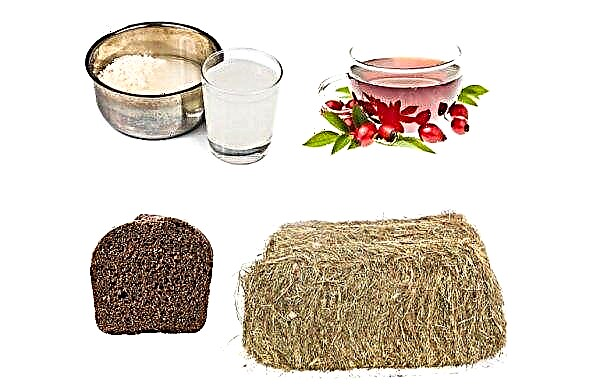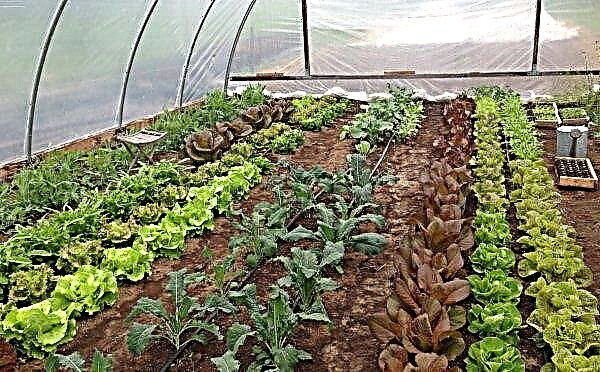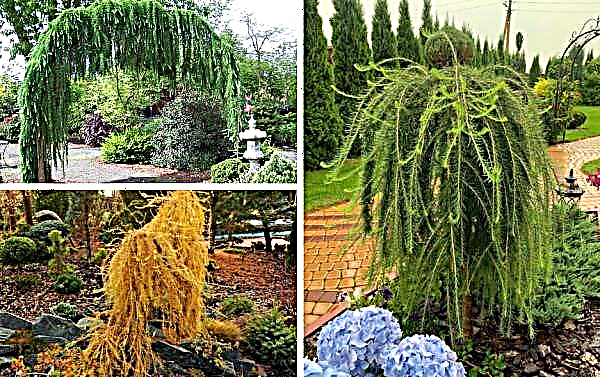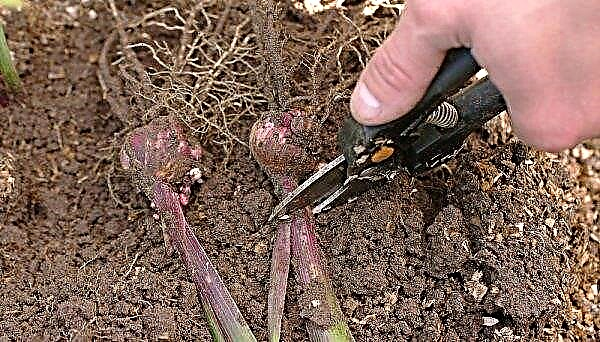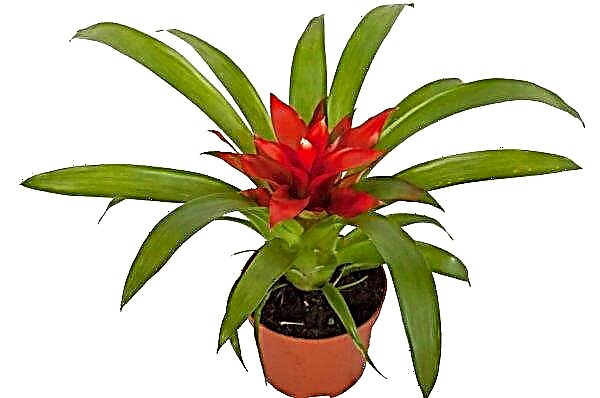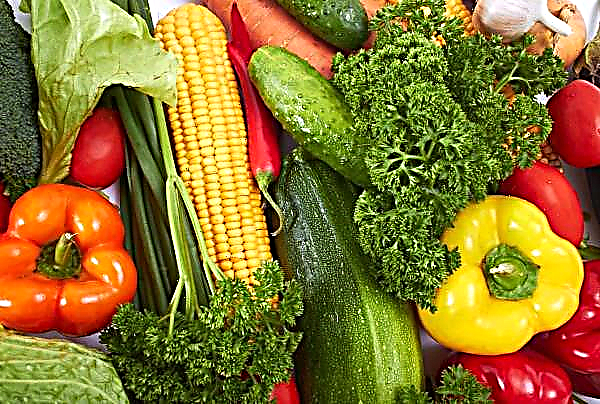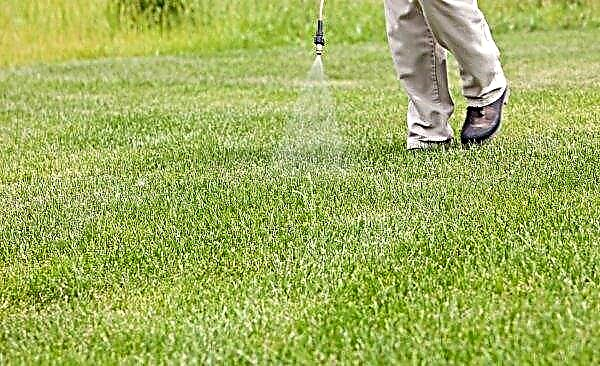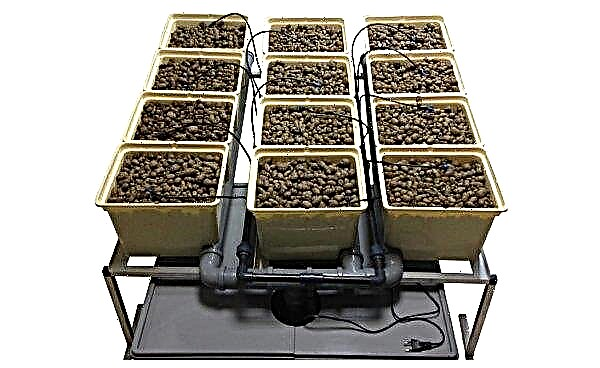Tomato variety Big Mom obtained by Russian breeders and patented in 2015. Originally intended for cultivation in greenhouse conditions, but also proved to be excellent in open ground in the southern regions of the Russian Federation. Consider the characteristics of the tomato variety Big Mommy, the best conditions and agricultural techniques for growing.
Grade description
The tomato variety Big Mommy has the following characteristics:
- early ripening of berries - the first crop is harvested on 85–95 days from the appearance of seedlings;
- a plant of a determinant type with a height of about 0.6 meters;
- forms a strong steady stalk;
- light green leaves of a potato type have a wrinkled appearance;
- inflorescences appear behind the 7th leaf and through each pair of leaves;
- bright red fruits have a heart-shaped or oval shape with a slight ribbing;
- the mass of tomatoes 200-400 gr.;
- 5–6 fruits are formed on each brush;
- the skin of the fetus is thin, but dense, not prone to cracking;
- the pulp is juicy, sweet and sour, with a small amount of seeds;
- fruits of good keeping quality, transportable;
- high productivity - up to 7-10 kg per 1 sq. km. m;
- resistance to fungal diseases (late blight, tobacco mosaic and powdery mildew), does not suffer from fusarium and apical rot;
- usually formed in 2-3 stems;
- 4-5 bushes per 1 sq. m

Advantages and disadvantages
- The advantages of the Big Mommy variety include:
- early ripening;
- high productivity;
- tasty fruits that are well stored and transported;
- it is not a hybrid, there are no F1 or F2 marks on it, and there are no obstacles to procuring seed material;
- universality of the use of fruits;
- disease resistance.
- Cons of this grade are:
- the need for a garter, as the branches of the plant bend strongly under the weight of the hands;
- the large size of the fruit, which does not allow their use for preservation or salting whole.
Planting and growing
In the southern regions, this variety can be sown directly into the ground in mid-April. For other climatic zones, it is grown from seedlings.
Did you know? Tomatoes were brought to Europe from the South American continent and for some time were grown as exotic plants, were considered poisonous. In 1820, to convince the people of the opposite, Colonel Robert Johnson ate a bucket of tomatoes at the courthouse.
Growing conditions
Tomatoes belong to heat and light-loving crops. For quick germination of seeds, a temperature of +25 ... + 30 ° C is needed, and after the appearance of the sprouts, the temperature must be lowered so that they do not stretch too much and better form the root system to +12 ... + 16 ° C. Fruits are better tied and ripen at a temperature of +20 ... + 25 ° С, but when the threshold is exceeded +30 ° С, the formation of the ovary ceases. The daylight hours for tomatoes should be at least 12 hours, and for better accumulation of dry substances in the fruits during ripening, the optimum lighting time is 14–18 hours. For the appearance of flowers and ovaries on the hands, the light intensity should be at least 4–5 thousand lux, but it is better if it is 20–35 thousand lux. The soil moisture for tomatoes is 80%, air humidity is in the range of 50-60%.
The daylight hours for tomatoes should be at least 12 hours, and for better accumulation of dry substances in the fruits during ripening, the optimum lighting time is 14–18 hours. For the appearance of flowers and ovaries on the hands, the light intensity should be at least 4–5 thousand lux, but it is better if it is 20–35 thousand lux. The soil moisture for tomatoes is 80%, air humidity is in the range of 50-60%.
Sowing preparation
Seeds before sowing are placed for 30 minutes. into a weak solution of potassium permanganate and then soaked in stimulants. If the seed was collected from healthy fruits, stored correctly, and you are sure of the quality of the seeds, then this is not necessary. But the soil is better cultivated, as it contains pathogens, including late blight.
You can buy ready-made and processed soil, but it will be more economical to mix garden soil with humus, adding sand or vermiculite to it for loosening. A container and soil mixture several days before sowing seeds is treated with a 3% solution of copper sulfate. You can not prepare new containers, and calcine the earth for half an hour for disinfection in the oven at a temperature of +90 ° С.
Important! There are no tomatoes without blight, there are only varieties resistant to it when the disease develops against the background of favorable conditions for its development. Therefore, when growing tomato varieties Big Mommy in a greenhouse or in places with a rainy climate and temperature changes, we should not forget about preventive measures against fungal diseases.
Sowing technology
Seeds are laid in grooves with a depth of 1-2 cm and carefully planted them in the ground. The soil is moistened before planting, and after sowing the seeds are sprayed with water. The container is covered with a transparent film on top and put in a warm place. When shoots appear after 3-5 days, it is transferred to a well-lit and cool place. In the phase of the appearance of two leaves, they are dived into separate containers.
Planting seedlings in a permanent place
Seedlings are planted in a greenhouse or in open beds at the age of 50–55 days. When planting in open ground, they make sure that the temperature does not fall below +12 ° C, and all the frosts have already passed. Before planting, the seedlings are hardened, taking out for a while in the cold. Before boarding, she should already be there around the clock.
The bed is prepared in the fall or not later than 2 weeks before planting, applying organic fertilizers. Solanaceous crops were not supposed to grow on it. The day before planting, wells are prepared, they are treated with 1% solution of copper sulfate and ash, superphosphate or other mineral fertilizers containing potassium and phosphorus are added.
Important! Fertilizers for tomatoes should contain a moderate amount of nitrogen. Too much nitrogen fertilizer inhibits ripening and increases the nitrate content in tomato fruits.
Seedlings are watered an hour before planting. Then carefully remove their containers and place in the hole, spreading the roots. Tomatoes of a determinant type with the formation of 2-3 stems are placed at a distance between them of 40 cm in a row and with row spacings of 50-60 cm. Already during planting, you can immediately insert pegs for garter bushes, so that later you will not injure the plant roots again.
How to care for tomatoes?
The variety of tomatoes Big Mom is looked after in the same way as for all tomatoes of a determinant type. Only this undersized bush still needs a garter, and it is optimal to form it in 2 or 3 stems.
Feeding and watering
Despite the fact that the tomatoes are resistant to drought, they need to be watered abundantly, especially in dry weather. It is also necessary to monitor watering during the period of seed germination and fruiting. During the growing of seedlings, flowering and the formation of buds, the need for moisture is not so great, but if watering during these periods is not enough, then the bush will slow down growth.
Drying of the soil for tomatoes is unacceptable - this will lead to shedding of color and ovary. In addition, the applied dressings will not be absorbed, but will also increase their concentration in the soil, which can cause burns on plants. Top dressing for a good tomato crop A big mom is needed. Organic fertilizers are suitable - rotted mullein, bird droppings, infusions of herbs, ash and others. Feed is recommended three times during the growing season.
Top dressing for a good tomato crop A big mom is needed. Organic fertilizers are suitable - rotted mullein, bird droppings, infusions of herbs, ash and others. Feed is recommended three times during the growing season.
Be sure to feed the tomatoes during the flowering period. For this purpose, wood ash is suitable. One glass of ash is poured into 1 liter of boiling water and insisted for 2 days. For watering, the solution is filtered through a sieve and water is added. This liquid should also be sprayed on top. Such top dressing will positively affect the development of the tomato bush and obtaining more fruits.
It will not be superfluous to feed with mineral elements. Nitrogen fertilizers are applied no more than two times, and after every 10 days they are applied with complex fertilizers containing phosphorus, magnesium, potassium, and boron.
Tying and shaping a bush
Tomato Big mommy forms heavy brushes. Therefore, so that the bush does not break under the weight of its own fruits, it should be tied up. As a support, wooden pegs are suitable. They are installed near each seedling bush 7 days after it is planted in the ground or during planting. Bushes of this variety are recommended to form in 2-3 stems. For this, each tomato leaves only the main stem and one or two strong stepson. From the other stepsons gradually get rid of.
Soil cultivation and pinching
When caring for this vegetable plant, the soil should be loosened for oxygen to reach the roots of the plant. In the process of loosening the soil around the tomatoes, weed grass is removed. Loosening of the soil is carried out after each irrigation. It is better to mulch the soil in the area around the tomato to prevent the soil from drying out. For this purpose, it is recommended to use straw with peat. Mulch will also inhibit weed growth on the site.
Tomatoes of the Big Mommy variety are recommended to be stepson, leaving only up to two strong stepsons for molding in several stems. Of course, the determinant type of plant can not do pinching and molding, but in this case the yield will be less. For this purpose, lateral shoots are removed to the first brush, without leaving stumps.
Did you know? When the tomato has not yet bloomed, the stepsons removed from it, 8-10 cm in size, can be planted in moist soil and get a new bush. Better will be rooted cuttings, plucked at the base of the plant.
Diseases and Pests
Tomatoes of this variety are resistant to many diseases. But under adverse circumstances and non-compliance with the rules of agricultural technology, the appearance of diseases and pests is possible.
Consider the main ones:
- Late blight. Its appearance can provoke temperature changes, heavy rains and high humidity. Blight affects leaves and fruits - dark brown spots form on them. Chemical preparations with copper content (Bordeaux liquid) are excellent at coping with this disease.

- Gray rot. The reason for the appearance is a lack of calcium and excess moisture. Gray rot is determined by the dark spots on the fruit. For the fight, it is recommended to use calcium nitrate.
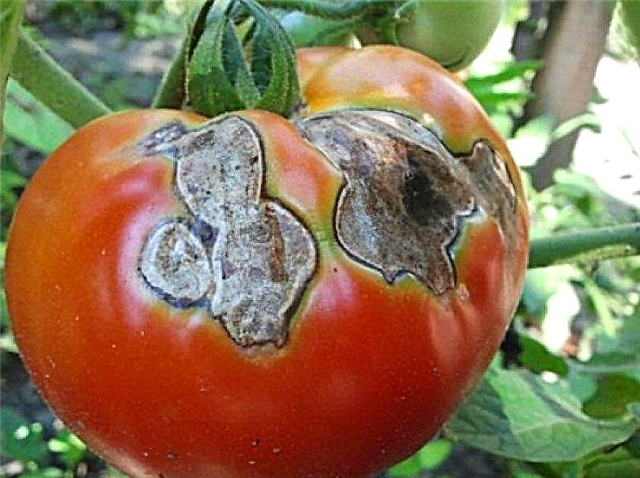
- Bear He loves manicured soils and to get rid of it they try not to introduce raw manure into the ground or make manure traps from it. Often used chemicals, such as "Thunder", "Bankol."
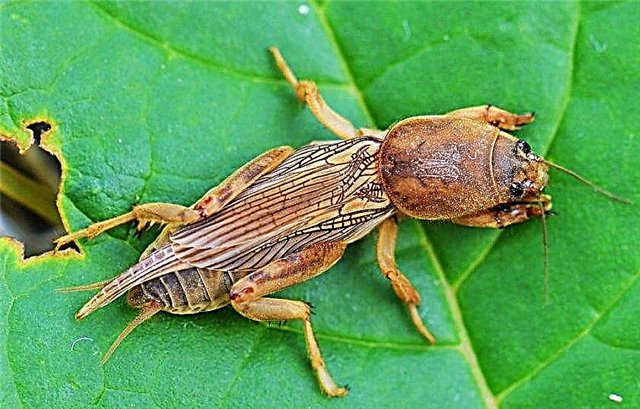
- Wireworm. Use the drug "Bazudin", placing its mixture with sand in the wells.
- Scoop. From the caterpillars of this nocturnal butterfly, chemical preparations (Decis, Aktara) or garlic infusion are sprayed.
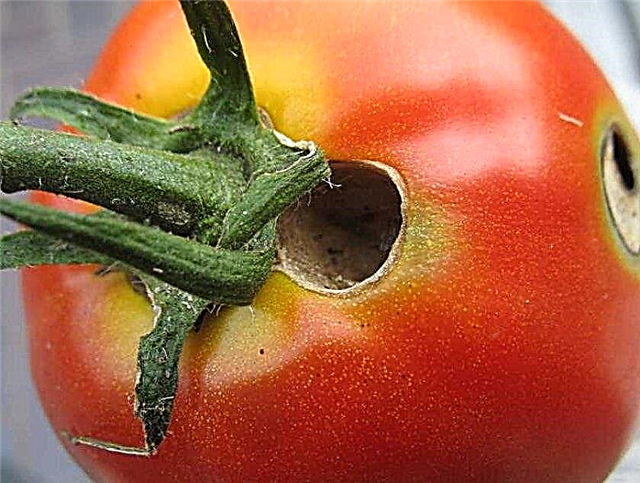
- Whitefly Usually lives in greenhouses. From these small white butterflies and their larvae, the same means will be suitable as from a scoop.
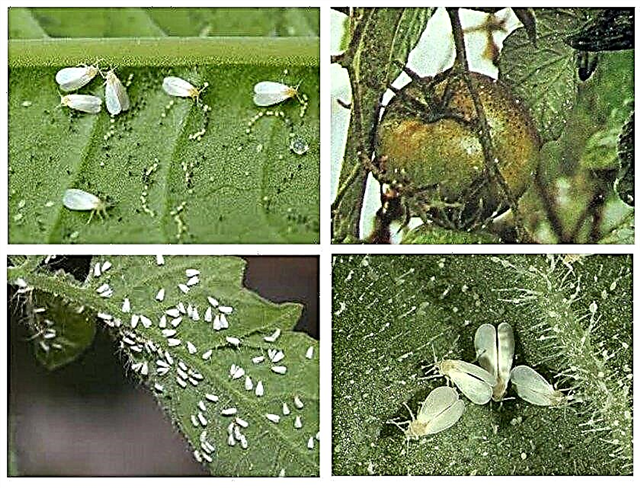
Tomatoes can be invaded by other insect pests - ticks, slugs. In this case, you can use traditional methods of struggle or apply chemical agents. To prevent the appearance of diseases and pests, it is necessary:
- remove weeds from the site;
- carry out regular loosening of the soil, as well as mulch it;
- water according to all the rules in the morning or evening;
- dig in the autumn;
- destroy the tops of "served their" tomatoes;
- do plant nutrition with organic and mineral fertilizers;
- adhere to proper crop rotation;
- carry out preventive spraying with chemical and folk remedies.
Tomatoes of the Big Mommy variety have high productivity and form many fruits of universal purpose. Although they have a bush of a determinant type, it must be tied up and stepsoned, forming 2-3 stems. But the variety is appreciated for its resistance to late blight and other diseases of tomatoes.Did you know? The aroma of marigolds planted near the site with marigold tomatoes, calendula, mint, garlic will scare away many pests.






